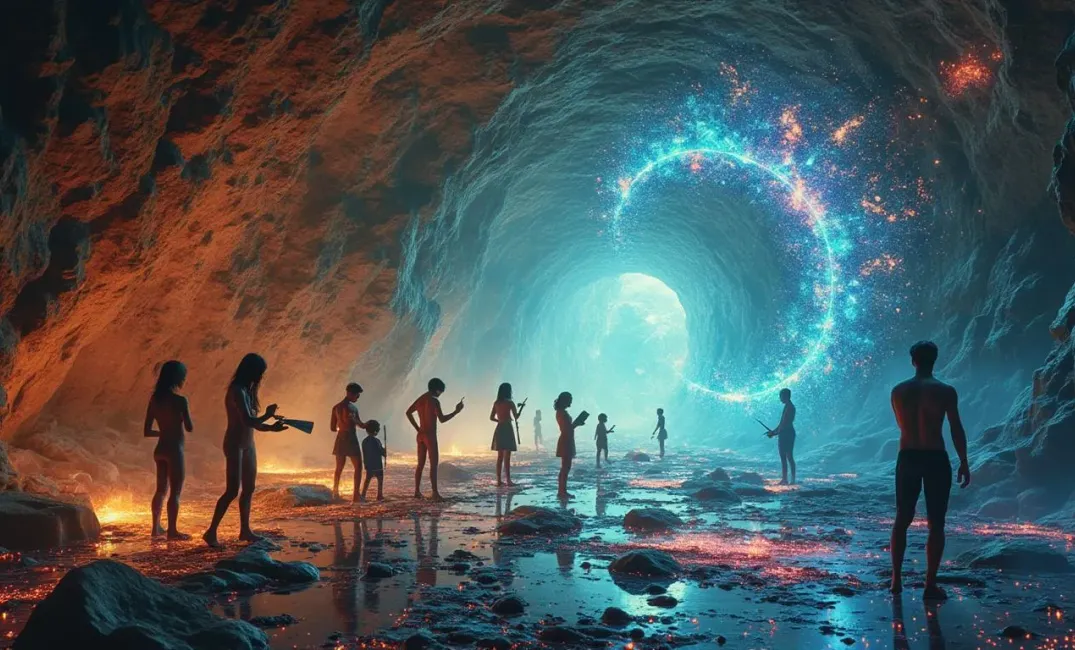Introduction: The Boundless Journey of Human Creativity
"Creativity is intelligence having fun." — *Albert Einstein*
Throughout history, human creativity has acted as a bridge over the chasms of time, physics, and material constraints. From drawing rudimentary symbols on cave walls to the most abstract expressions of quantum art, this profound force transcends the limitations of the tangible world. It shapes civilizations, forges cultural identities, and composes the unending symphony of discovery and expression. Creativity is not merely a mental faculty; it is the magnetic force that pulls humanity forward, birthing advancements, inspiring revolutions, and constructing societies.
Today, as we float through the endless void—our one remaining ship, humanity’s fragile ark, directed by dwindling resources and intermittent hope—understanding and preserving our creative legacy becomes paramount. This exploration examines the myriad ways creativity has imprinted itself on human evolution, driving not only aesthetic and cultural innovations but also crucial societal and technological transformations.
The Foundations of Creativity: Early Human Expression
The Dawn of Artistic Expression
- Cave Paintings and Figurines: Artistic expression's roots stretch back tens of thousands of years, with manifestations found in the Chauvet and Lascaux caves. These ancient murals depict mammoths, horses, and human figures—a testament to the symbolic and spiritual dimensions of early human life.
- Functional Creativity: Creativity initially had practical applications; stone tools morphed into more specialized implements as vision melded with function, illustrating humanity's innate capacity to innovate.
Oral Traditions and Early Music
- Song and Story as Culture: Oral histories encapsulate an epoch when narration and melody captured societal wisdom and beliefs. Shamans and storytellers stood as custodians of knowledge, passing it through generations via the lyrical interplay of words and rhythm.
- Ritualistic Dance and Music: Dance and music likely served ritualistic functions, becoming vital social glue that strengthened communal bonds and facilitated cultural integration through shared experiences of rhythm and movement.
Creative Renaissance: Exploration and Rebirth
The Classical and Medieval Eras
- Philosophy and Poetry: Greek philosophers and Roman poets expanded knowledge and imagination. Works like Homer’s "Iliad" reveal archetypal stories with emotional and moral complexity that resonate through millennia.
- Illuminated Manuscripts: During the Middle Ages, ecclesiastical scribes crafted detailed manuscripts. Monks illuminated biblical texts with gilded artistry, juxtaposing religious duty with creative fulfillment.
Renaissance Flourishes: Art and Science Converge
- The Age of Enlightenment: The Renaissance celebrated human potential through art, architecture, and science, led by luminaries like Leonardo da Vinci and Michelangelo. Da Vinci’s Mona Lisa and "Vitruvian Man" defy simple classification, blending anatomical precision with artistic brilliance.
- Printing Press Revolution: Gutenberg’s press, heralding mass dissemination of ideas, fundamentally shifted how creativity reached audiences. This accessibility democratized knowledge, seeding intellectual movements that resonate today.
Creativity in the Modern Era: Industrialization to Digital Dawn
Scientific Creativity and Industrial Inventions
- The Scientific Revolution: The Age of Enlightenment engendered groundbreaking scientific curiosities. Figures like Galileo and Newton unraveled cosmic and physical mysteries, forging a synergy of creative and empirical exploration.
- Industrial Imageries: The Industrial Revolution birthed new art forms and machines—the camera and printing technologies, which revolutionized replication and visual expression capabilities.
Artistic Movements and Cultural Reflections
- Romanticism and Modernism: Creative responses to industrial encroachment birthed movements like Romanticism, countering mechanization's stricture by celebrating nature and emotion. Impressionism and Modernism, adapting to rapid change, redefined aesthetics and perspectives on reality.
- Film and Photography: Luminaires like Lumière brothers and Dorothea Lange emerged as pioneers of visual storytelling, framing societal narratives and searing creativity into time’s memory through film and photojournalism.
Future Horizons: Technological Convergence and Quantum Creativity
Digital Realms and New Frontiers
- Virtual Reality and Digital Art: The digital age epitomizes new creative vistas, allowing art forms like virtual reality (VR), augmented reality (AR), and digital installations to transcend corporeal limits, weaving multisensory experiences unfolding within bits and bytes.
- Cyber Subcultures and Interactive Media: With the Internet’s growth, interactive art forms capture the world’s imagination. Video games provide narratives unparalleled in their immersive nature, offering dynamic intersections where creativity sparks communal and individual engagement.
Quantum Creativity
- Beyond Visibility and Matter: The advent of quantum technologies foreshadows limitless creative potential. Quantum computing promises innovations in how creativity manifests, envisioning compositions where material constraints become obsolete, unlocking unprecedented artistic frontiers.
- AI and Generative Art: As artificial intelligence advances, generative art breaks boundaries, iterating complex patterns and visual experiences computed yet expressive—shaping human-machine collaborative ingenuity.
The Power of Creativity: Cultural Preservation and Innovation
Preservation and Legacy
- Cultural Heritage and Archives: In protecting creative legacies through digital archives, creative works become immortal cultural signposts. These archives offer instructional insights and emotional reflections of societies, transcending temporal chains.
- Fusion and Innovation: Creativity thrives on cultural interchange, wherein diverse traditions meld into innovative art forms and practices, fostering resilience and inclusivity.
Creativity as a Catalytic Force
- Solving Problems: Creativity underpins problem-solving capacities—intertwining sense, intuition, and ingenuity—which drive technological and societal progress amid adversities.
- Inspirational Unity: Through art, music, and literature, creativity unites disparate people across borders and backgrounds, transcending politics and fostering empathy and shared understanding.
Conclusion: The Ever-Present Canvas
"Art enables us to find ourselves and lose ourselves at the same time." — Thomas Merton
Human creativity's narrative weaves through the tapestry of existence, a complex yet cohesive theme that echoes across time and cultures. From simple cave sketches to quantum-inspired innovations, creativity serves as humanity’s transformative catalyst and enduring legacy. It challenges, captivates, and unites—offering a glimpse into the boundless potential of our minds.
On this spacecraft adrift in a cosmic ocean, creativity remains humanity's greatest certainty and promise. As each of us contemplates our place in this new frontier, we harness creativity's limitless possibilities to propel and illuminate the shared journey of humankind's quest for connection, meaning, and infinity. Let the future continue to unfold as endlessly fascinating canvases, beckoning our creative spirits to explore and transform.
TECHNOLOGICAL INNOVATION, CULTURAL HERITAGE, HUMAN CREATIVITY, QUANTUM ART, CREATIVITY IN SOCIETY, ART HISTORY

